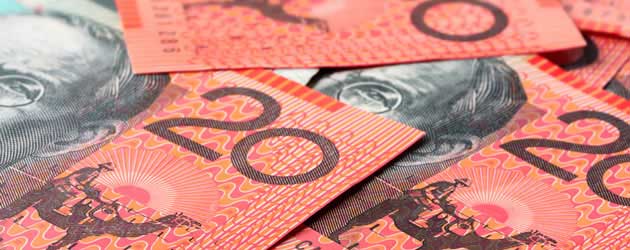
The Pound to Australian Dollar exchange rate (GBP/AUD) declined by around a third of a cent earlier this morning as markets reacted to the weakest Chinese GDP figure since 1999.
The Chinese economy slowed from 7.8% to a 14-year low of 7.7% during the fourth quarter, however, demand for the ‘Aussie’ Dollar improved because investors had anticipated a slightly softer reading of 7.6%. The mildly stronger-than-expected GDP report gave risk sentiment a slender boost, which translated into a slightly stronger Australian Dollar.
With 90% of Australian Gross Domestic Product coming from net exports, and 30% of all Australian exports going to China, it is very important for Australia that the world’s second largest economy maintains growth above 7.5%.
Additionally, it was reported that Chinese Industrial Production slowed from 10.0% to 9.7% and that Retail Sales decelerated from 13.7% to 13.6%.
The Pound to Australian Dollar exchange rate (GBP/AUD) struck a fresh 4-year high of 1.8751 on Friday as markets reacted to a vastly stronger-than-anticipated UK Retail Sales report. The monthly increase of 2.8% overshot expectations of 0.3% and the yearly gain of 6.1% smashed forecasts of just 3.2%.
With sales increasing considerably at department stores, small shops and online, the highly watched barometer of private consumption came in far more optimistically than analysts had expected. This boosted UK GDP forecasts and it is now thought that the economy grew at a quarterly pace of around 1.0% in Q4. Subsequently demand for Sterling rose as markets speculated over the probability of an interest rate hike from the Bank of England this year.
The ‘Aussie’ Dollar remained susceptible to selling pressures following Thursday’s poor -22,600 Employment Change report, which left the Australian Unemployment Rate at 5.8% – its joint highest rate since 2003. The increasingly soft labour market outlook is symptomatic of the transition as Australia rebalances following a once-in-a-century mining boon.
Comments from Australian Prime Minister Tony Abbott and Reserve Bank of Australia Governor Glenn Stevens suggest that the RBA will cut rates at some point in 2014. These dovish sentiments are likely to weigh over the ‘Aussie’ throughout the year.
In stark contrast the Reserve Bank of New Zealand has expressed an explicit desire to raise its benchmark interest rate by 225 basis points to 4.75% over the next two years and this is having a bullish impact on NZD trading. The Pound to New Zealand Dollar exchange rate (GBP/NZD) was largely unaffected by the Chinese growth figures because traders are more focussed on the RBNZ’s rate hike bias.
Later this evening New Zealand CPI inflation is expected to rise from 1.4% to 1.5%, but the slight increase in price pressures is unlikely to persuade the RBNZ to hike rates just yet.

Comments are closed.